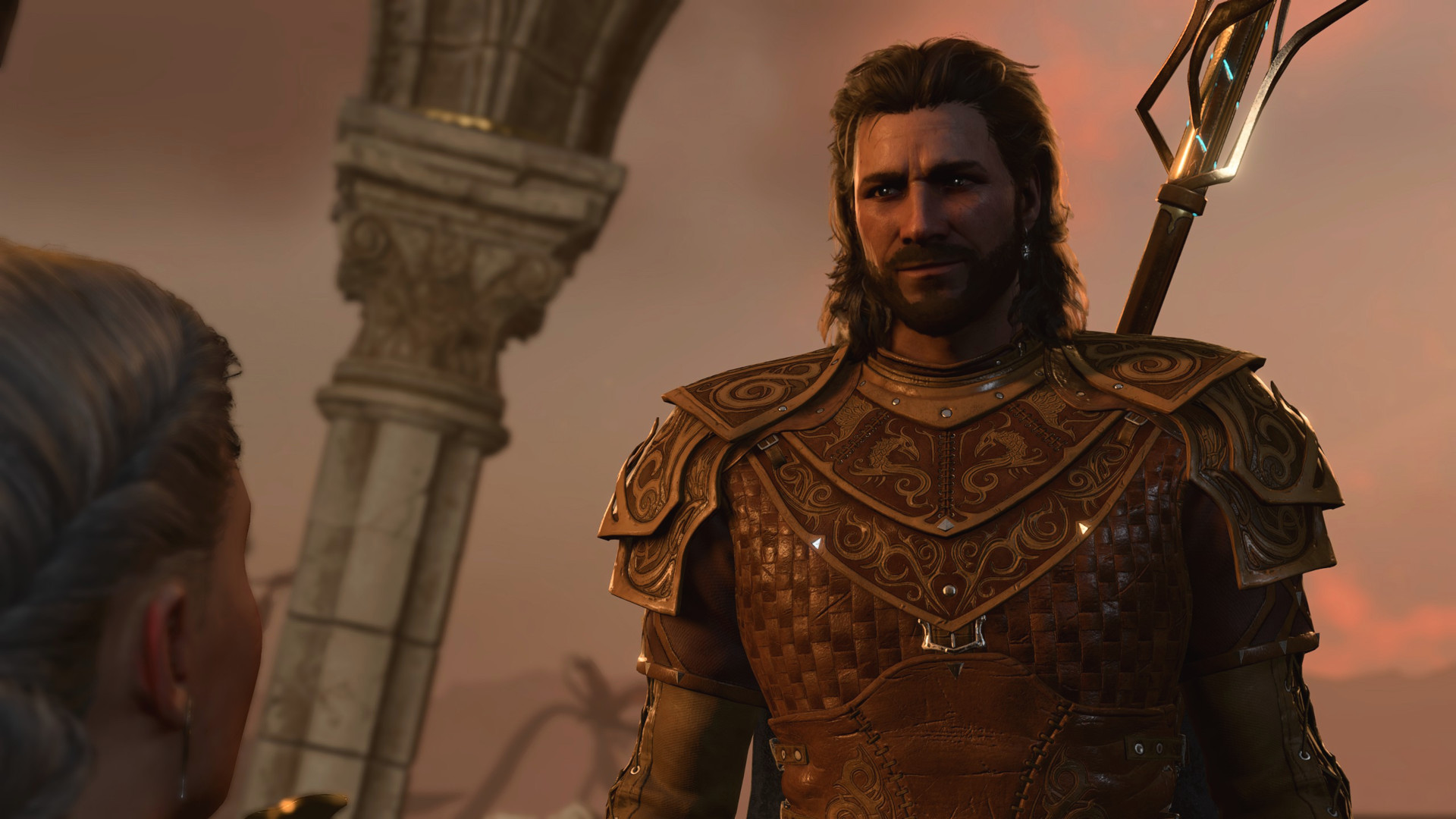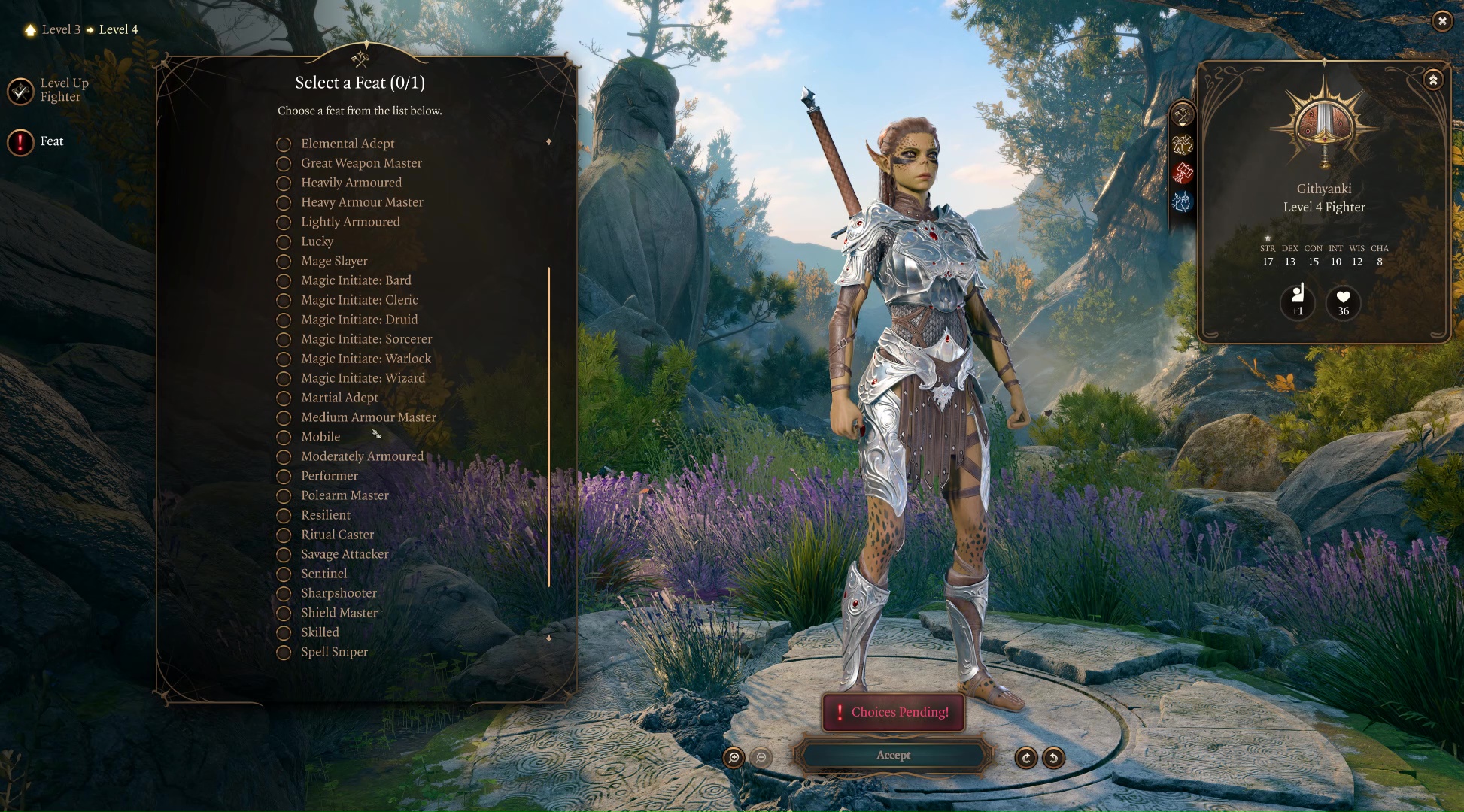The best Baldur's Gate 3 feats
The best feats in BG3 can make a strong character into an unstoppable one

The Best Baldur’s Gate 3 feats can turn the tide of battle, create new builds, help you in speech checks and much more! Whether you're a spellcaster or a straightforward brawler, feats can help you lean more into your build or branch out in a new direction as you play Baldur's Gate 3. But, there are a lot of feats in the game and you’re not going to be able to get them all. In this guide, we’re going to help you find the very best feats in the game, giving you something to aim for, regardless of your build. You should also explore our Baldur’s Gate 3 tips for more help!
We updated this Baldur's Gate 3 feats guide on 7 November to make sure all information is true and useful.
Baldur's Gate 3 best feats and class matchups

We've chosen the 10 best feats in Baldur's Gate 3 below, as well as an explanation of what makes them so powerful and what classes should choose them.
- Ability Improvement (best for all classes). Bumps either one core ability of your choice by two points, or two abilities by one point. Basically what you go for when you don't know what else to do, an inherent buff that can't be regretted.
- Magic Initiate (best for non-spellcasters). Pick two cantrips and a level 1 spell from any spellcaster class. So many combinations of great builds that it's almost overwhelming, but we recommend picking the Warlock if you're not certain - Eldritch Blast, Mage Hand and Hex are a great trio. Otherwise, think creatively - what Monk wouldn't be improved by having a Druid's Shillelagh spell on their quarterstaff?
- Great Weapon Master (best for Fighters, Barbarians, Paladins). Killing a foe or landing a critical hit with a two-handed weapon allows you to attack again as a bonus action. You can also choose to take -5 to any two-handed weapon attack roll in exchange for +10 damage if you land the hit. A really powerful feat that works phenomenally on your front-line fighters, especially for groups of enemies or foes with lower AC.
- Lucky (best for all classes). You can spend "luck points" to gain advantage on a roll, or force an enemy to reroll their attacks, gaining three luck points per long rest. A bit boring, but it effectively acts as a safety net against catastrophe.
- Sentinel (best for Paladins, Fighters, Barbarians, frontline Clerics). When an enemy in melee range attacks an ally, you can use a reaction to hit them. You also get advantage on opportunity attacks, and hitting an enemy with an attack of opportunity stops them from moving further. Clearly this is a feat for your tanks and protectors, allowing them to keep the fighting focused on themselves and punishing enemies who try to get out of range. Paladins in particular will thrive with this skill to hand.
- Sharpshooter (best for Rogues, Rangers, Bards, dexterity Fighters). This feat takes away the penalty for shooting ranged weapons (not including spells) at higher targets above you. You can also choose to take -5 to any ranged weapon attack roll in exchange for +10 damage if you land the hit. Basically the ranged equivalent of Great Weapon Master, while it's not quite as good, it's still very useful for those who want to thrive in ranged weapon combat - a rogue making a ranged sneak attack from stealth, for example, might have so many bonuses that -5 is easily covered for, landing easy, high-damage headshots.
- Tough (best for all classes). Gain an extra +2 max HP per existing level, and +2 max HP every time you level up in the future. Whether you want to make your tanks tankier, or try and give your squashy spellcasters a little extra survivability, this is a nice, safe option.
- Mobile (best for Monks, Rogues, Rangers, small races in general). +3 meters to movement speed, you can't be slowed by difficult terrain if you dash, and you don't provoke opportunity attacks. Any class that thrives on speed will do great here, especially Monks and Rogues employing literal hit-and-run tactics, but the ability to not get hit by opportunity attacks means those who need to stay away - like Wizards and Sorcerers - can stay out of reach of melee warriors.
- Savage Attacker (best for Paladins, Fighters, Barbarians). When making melee weapon attacks, you roll damage twice and take the better result. This doesn't work on ranged attacks, but all effects on weapon damage are affected - meaning your Paladins' smites will get rerolled too. A nice way to ensure your attacks are never too disappointing.
- Spell Sniper (best for Wizards, Sorcerers, Warlocks, certain Cleric builds). You learn a damage cantrip of your choice that requires a spell attack roll. The result you need to activate a critical hit when rolling a dice for a spell attack roll is reduced by 1. A fun perk that allows a little more versatility and firepower in your spellcasters, as the chance of landing a crit rises from one in twenty, to one in ten.
How to get feats in Baldur's Gate 3

Characters get a feat every four levels per class - so once at level 4, and again at levels 8 and 12. The Fighter class also gets extra feats at level 6 and the Rogue an extra feat at level 10.
Keep in mind that this isn't every four levels, it's every four levels per class. So being a level 4 Ranger will get you a feat - but multiclassing into a level 3 Ranger and level 1 Monk will not, something to keep in mind when choosing your approach.
Want more help when building your character in BG3? We've got guides on the best Baldur's Gate 3 skills and Baldur's Gate 3 spells, or if you're suffering from buyers remorse, check out how to respec in Baldur's Gate 3 and change class here!
© GamesRadar+. Not to be reproduced without permission
Weekly digests, tales from the communities you love, and more

Joel Franey is a writer, journalist, podcaster and raconteur with a Masters from Sussex University, none of which has actually equipped him for anything in real life. As a result he chooses to spend most of his time playing video games, reading old books and ingesting chemically-risky levels of caffeine. He is a firm believer that the vast majority of games would be improved by adding a grappling hook, and if they already have one, they should probably add another just to be safe. You can find old work of his at USgamer, Gfinity, Eurogamer and more besides.
- Jasmine Gould-WilsonStaff Writer, GamesRadar+


